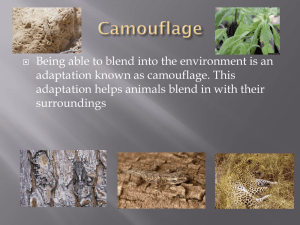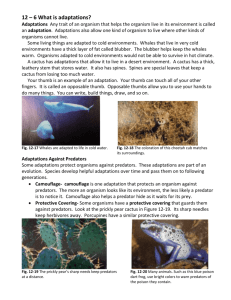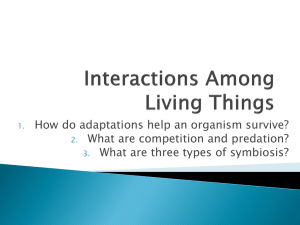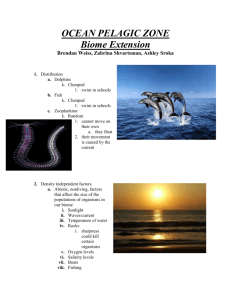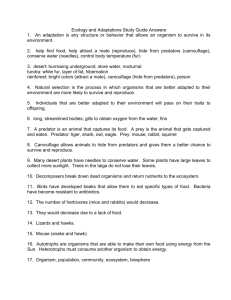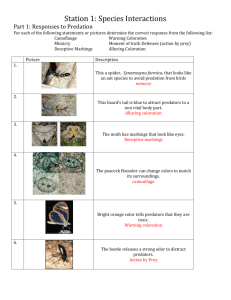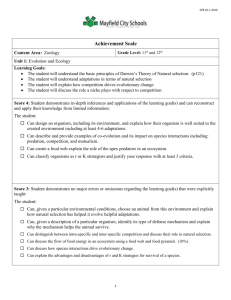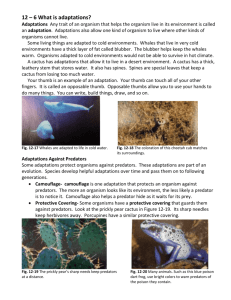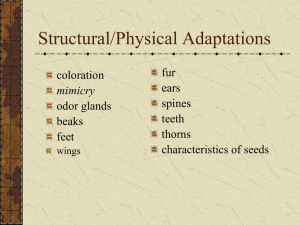Adaptations: Traits and Behaviors for Survival
advertisement
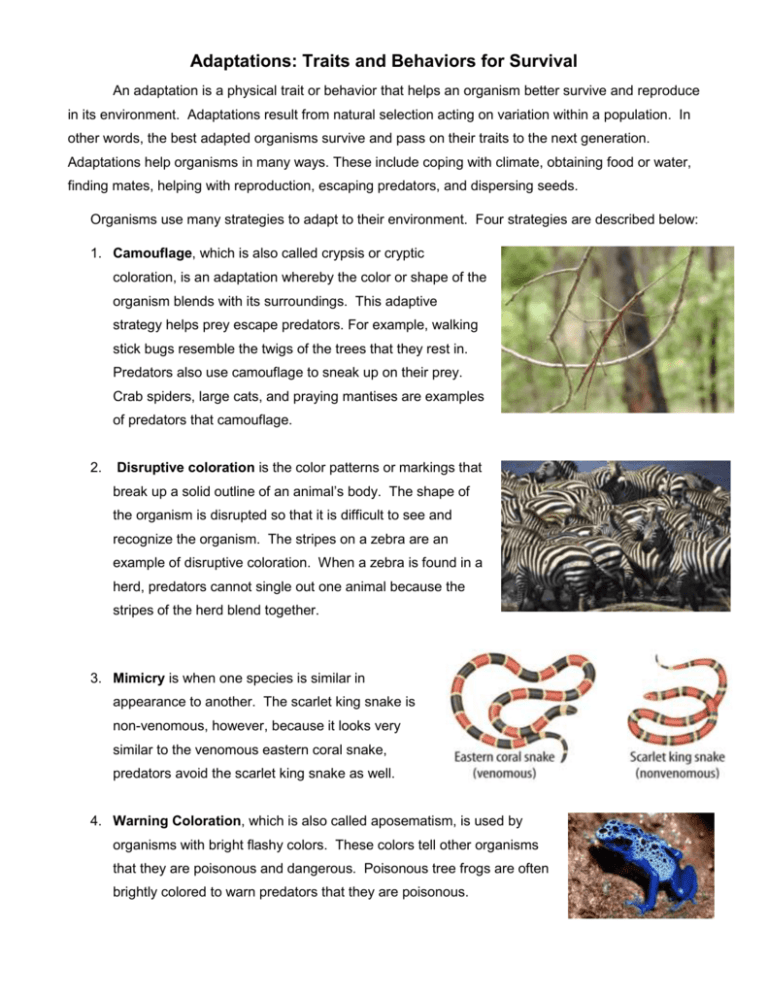
Adaptations: Traits and Behaviors for Survival An adaptation is a physical trait or behavior that helps an organism better survive and reproduce in its environment. Adaptations result from natural selection acting on variation within a population. In other words, the best adapted organisms survive and pass on their traits to the next generation. Adaptations help organisms in many ways. These include coping with climate, obtaining food or water, finding mates, helping with reproduction, escaping predators, and dispersing seeds. Organisms use many strategies to adapt to their environment. Four strategies are described below: 1. Camouflage, which is also called crypsis or cryptic coloration, is an adaptation whereby the color or shape of the organism blends with its surroundings. This adaptive strategy helps prey escape predators. For example, walking stick bugs resemble the twigs of the trees that they rest in. Predators also use camouflage to sneak up on their prey. Crab spiders, large cats, and praying mantises are examples of predators that camouflage. 2. Disruptive coloration is the color patterns or markings that break up a solid outline of an animal’s body. The shape of the organism is disrupted so that it is difficult to see and recognize the organism. The stripes on a zebra are an example of disruptive coloration. When a zebra is found in a herd, predators cannot single out one animal because the stripes of the herd blend together. 3. Mimicry is when one species is similar in appearance to another. The scarlet king snake is non-venomous, however, because it looks very similar to the venomous eastern coral snake, predators avoid the scarlet king snake as well. 4. Warning Coloration, which is also called aposematism, is used by organisms with bright flashy colors. These colors tell other organisms that they are poisonous and dangerous. Poisonous tree frogs are often brightly colored to warn predators that they are poisonous. Adaptations Types and Examples Coping with Climate Obtaining Food and Water Heavy fur Spiders build webs Thick fat layer Body structures that allow organisms to migrate (Ex. Canadian geese have wings with hollow bones and feathers) Giraffes have long necks to reach food in trees Frog’s tongue is attached to the front for quick movements to catch food Evergreen leaf shape Deciduous plants cut chlorophyll production and drop their leaves in the winter Plants have root hairs to help absorb water Some plants have broad leaves to help collect sunlight for photosynthesis Herons have long legs to wade in the water to catch fish and crayfish Finding a Mate/Reproduction Escaping Predators Coloration of feathers help birds find mates A rabbit’s leg structure is good for running Quills of porcupines Plants attract pollinators through various methods: bright colors and scents Thorns of rosebush Smells are used to attract deer Skunk’s odor glands produce a smell Sound are used by many species of whales to attract mates Coloration that helps to camouflage an organism Bad taste of certain butterflies Poisonous frogs and venomous snakes Seed Dispersal Burs have hooks that allow them to stick to fur and feathers for animals to transport seeds Wings of a maple seed and parachute shape of milkweed seeds allow wind to carry them to a new location Seeds encased in fruits are eaten by animals and dispersed as the animal travels

